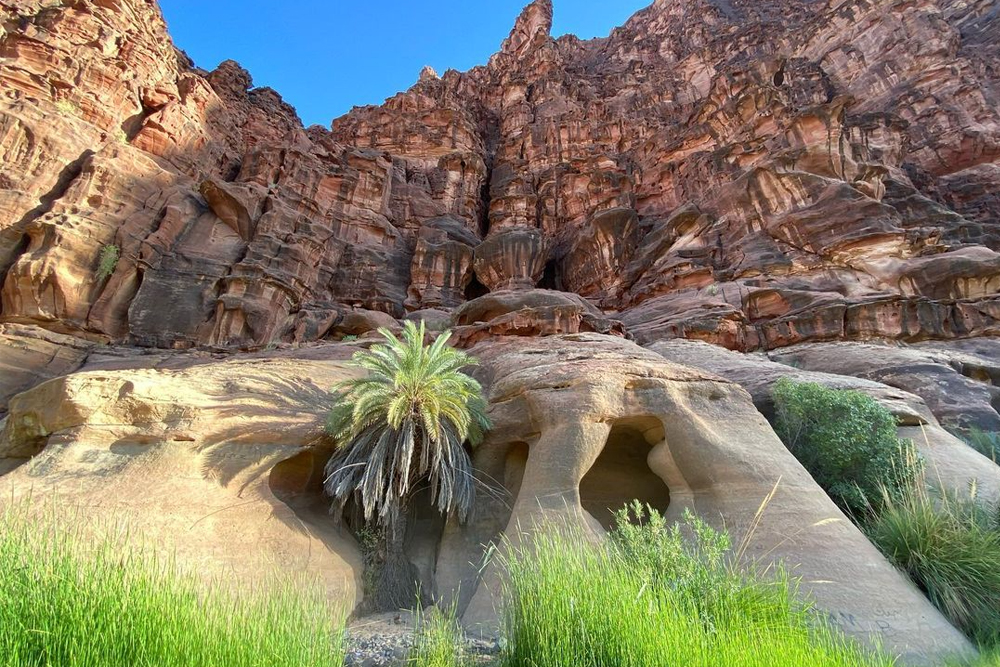
Image via @tinne_loh
Everyone probably knows what the Grand Canyon; a breathtaking landmark in the American state of Arizona, its unique formation a result of rock erosion by the Colorado River. For many, this natural wonder is unique to the United States, but believe it or not, the northwestern region of Tabuk in Saudi Arabia has something similar and perhaps even more stunning: Wadi Al Disah (or Al Disah Valley in English).
Located over 200 kilometers south of Tabuk city, this valley is known by other names as well such as Tamar Al Nabq, Wadi Al Habak, Wadi Damah, and Wadi Qarar. Wadi Al Disah is said to be one of a complex series of six sandstone canyon-like valleys that run in an East to West direction, and prominently features towering, dramatic, red cliffs similar to the Grand Canyon. However, take a closer look and you might notice striking features that make it unique from its American cousin.
Firstly, the climate there is quite moderate, allowing for lush greenery in the valley itself. In fact, the area is ideal for growing crops such as bananas, mangoes, tomatoes, citrus fruits, and vegetables. In addition, water pours into the valley, gathering at a spot known as the Blue Eye and providing much needed water to local vegetations and wildlife.
Wadi Al Disah isn't just popular for its picturesque scenery. Look around and you will discover that the valley is also a site of historical importance, with earliest archeological signs dating back to the Bronze Age. Succeeding civilizations that called the valley home include the Thamuds, Dedanites, Lihyanites, and Nabateans. In fact, historical relics that you could find around the valley include a Lihyanite statue, Nabatean tombs, and Kufic inscriptions.
But, what other activities could you do in Wadi Al Disah? Actually, a lot! This landmark is ideal for off-road hikes, birdwatching, photography walks, and even rock climbing. In addition, there are campsites, picnic areas, and a kid's play area in Al Disah Gardens as well. You can visit the valley at any time of the year, but, to truly enjoy the scenery, it's highly recommended to do so when it rains.

















